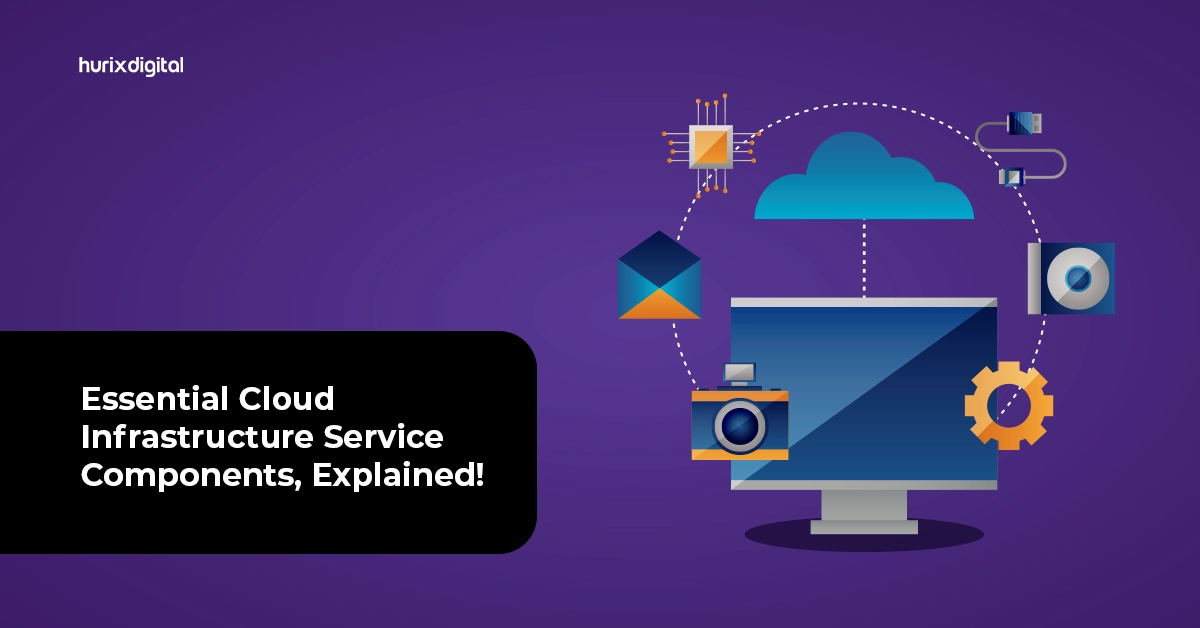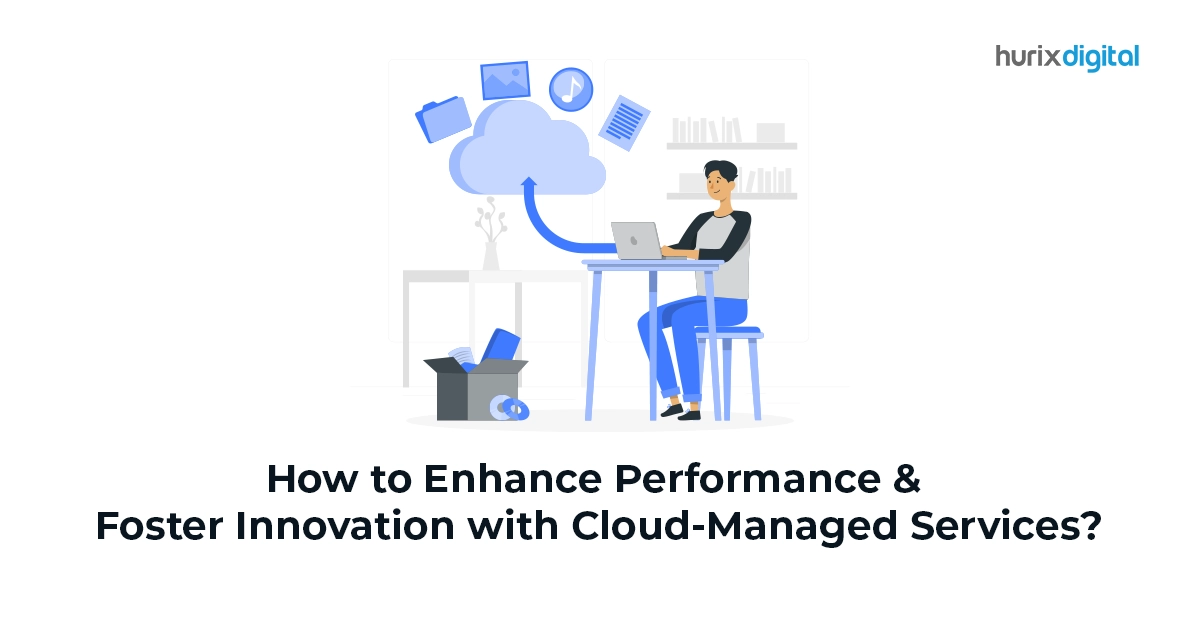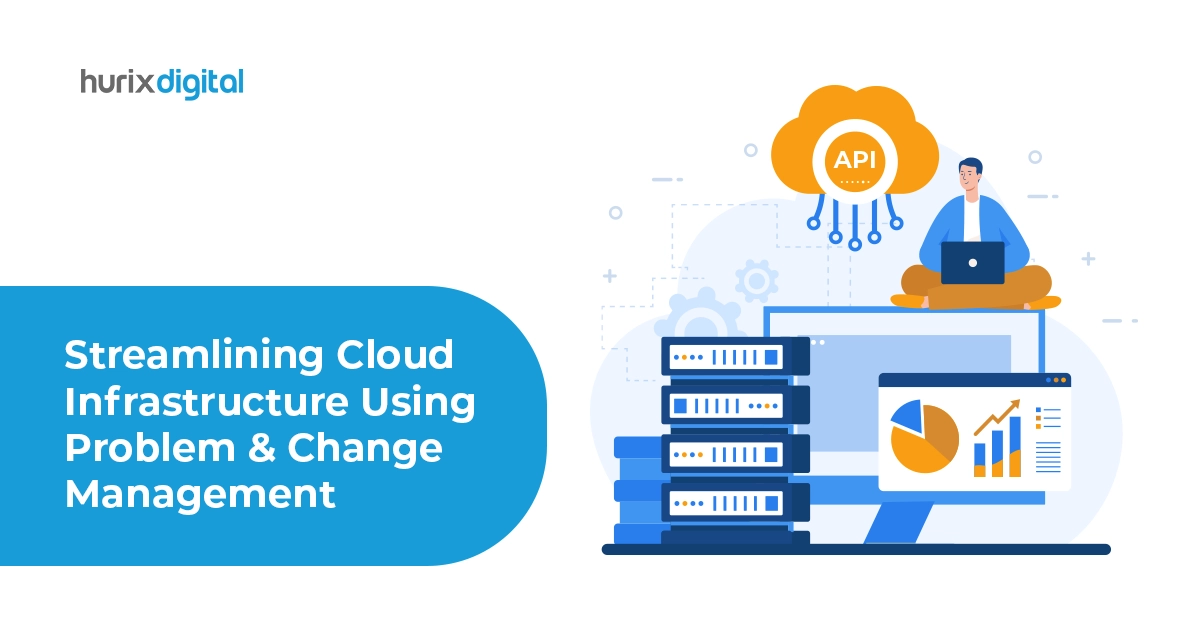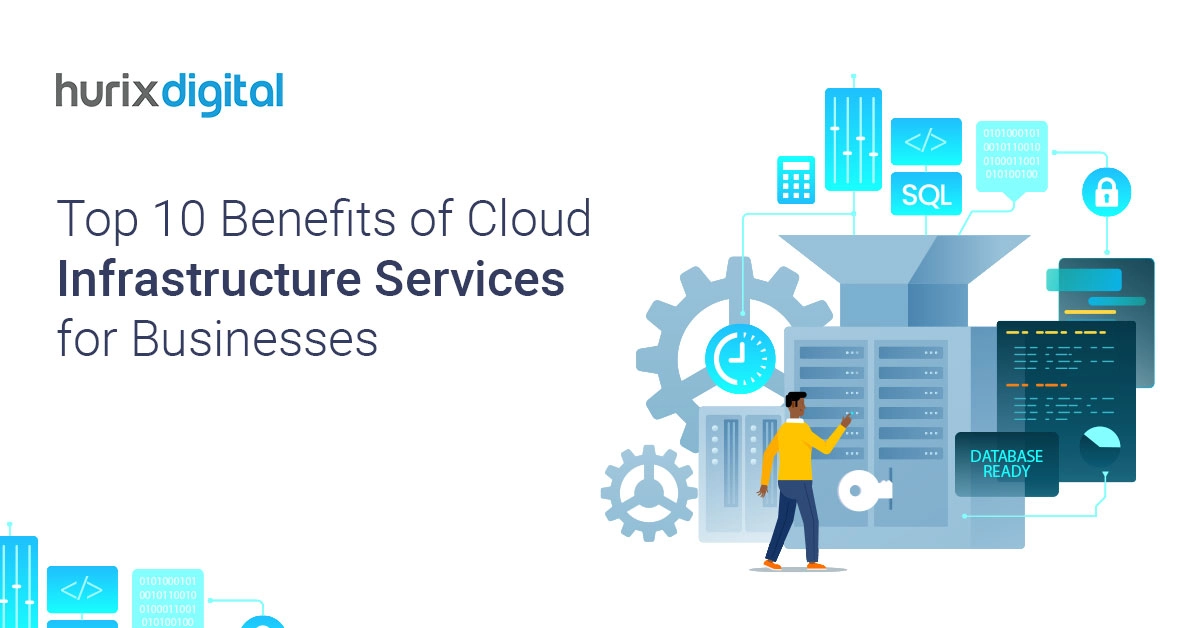
Essential Cloud Infrastructure Service Components, Explained!
Summary
This blog post breaks down the essential components of cloud infrastructure services. It explains key elements and how they work together to provide secure cloud solutions for your business.
The cloud computing industry is booming, with the cloud applications market exceeding $150 billion and expected to store 200 zetabytes in the cloud by 2025. Underpinning this exponential growth is cloud infrastructure, the invisible yet essential foundation that powers these on-demand computing services.
Cloud infrastructure makes up the core technological foundation upon which cloud computing services are offered. It consists of an extensive collection of hardware, software, and networking resources that make creating and delivering on-demand computing environments easier.
This in-depth guide assists in grasping the fundamental components of cloud infrastructure services. We will examine the different structural designs supporting cloud computing, investigate the necessary elements of this complex system, and outline the diverse service models for businesses.
Table of Contents:
- Cloud Infrastructure Architecture Explained
- Primary Components of Cloud Infrastructure Services
- Understanding Cloud Service Models
- The Bottom Line
Cloud Infrastructure Architecture Explained
Cloud infrastructure is available in a variety of architectural models, each with unique benefits and limitations:
1. Public Cloud
The public cloud market is experiencing explosive growth, with estimations reaching more than $824 billion by 2025. The Public Cloud Service Model, where a third-party service provider, such as Amazon Web Services (AWS) or Microsoft Azure, owns and manages the cloud infrastructure, is the driving force behind this surge.
Users access resources like servers, storage, and software over the internet on a pay-as-you-go basis. Although this option offers significant cost-effectiveness and flexibility, it could cause security and privacy concerns for companies managing confidential data.
2. Private Cloud
In this scenario, a single organization exclusively uses the cloud infrastructure. It could be housed by a service provider in a special environment or on the actual property of the company. For critical data, private clouds provide more control and protection, but they also come with a hefty upfront cost and continuous maintenance skills.
3. Hybrid Cloud
Hybrid cloud solutions, adopted by 82% of IT leaders, combine the security and control of private clouds with the scalability and cost-effectiveness of public clouds. This strategic approach allows companies to maintain a private cloud setup for sensitive data and applications.
In contrast, less critical tasks and data can then be migrated to the public cloud, where businesses can leverage on-demand resources and benefit from cost optimization.
Also Read: The Role of Web Hosting in Website Development: Shared, VPS, Dedicated, and Cloud Hosting
Primary Components of Cloud Infrastructure Services
Cloud infrastructure includes all the hardware and software elements required to provide cloud services. This complex system of assets can be divided into three essential components.
1. Network Infrastructure
The network infrastructure is the critical component responsible for connecting various cloud services across the Internet. This intricate network built and maintained by cloud service providers serves as the lifeblood of data and resource transmission. It facilitates seamless flow, both internally within the cloud environment and externally across broader connections.
A range of hardware components are present, each serving a distinct purpose inside the network architecture.
- Routers: As traffic directors, these clever machines quickly direct data packets to appropriate locations throughout the network.
- Switches: Switches optimize communication efficiency and speed by learning the network structure and creating dedicated connections for data transmission between particular devices.
- Load Balancers: Incoming traffic is divided among several servers in the cloud environment by load balancers. It prevents a single server from being overburdened and guarantees dependable operation even in situations of heavy demand.
- Physical Cables: Fiber optic or copper cables serve as the physical channel for data transfer and are the fundamental building block of network connectivity.
2. Servers
These powerful computers are essentially programmed devices that deliver multiple services to users. Here is a breakdown of the role of servers within the cloud:
- Service Delivery: Servers can encompass tasks like running web applications, databases, and other critical functionalities.
- Resource Management: Servers allocate processing power, memory, and storage to ensure the smooth operation of cloud services.
- Security Enforcement: Security is paramount within the cloud. Servers can be configured to implement security protocols, manage user access, and safeguard sensitive data.
3. Virtualization
Virtualization enables the abstraction of physical hardware resources – processing power, storage, and memory – into virtual counterparts. This fundamental concept unlocks a multitude of benefits:
- Resource Efficiency: Virtualization eliminates the need for direct hardware interaction by users. Instead, they leverage a user-friendly graphical interface to manage virtual machines (VMs) and virtual storage units. It simplifies resource allocation and promotes efficient utilization of the underlying physical infrastructure.
- Scalability: Cloud environments experience fluctuating resource demands. However, virtualization allows for dynamic resource scaling. Businesses can easily add or remove virtual machines as the need arises. This ensures they can meet peak workloads without being burdened by underutilized physical hardware.
- Cost Optimization: Virtualization maximizes resource utilization through efficient allocation and dynamic scaling, leading to cost savings for cloud service providers and users.
4. Storage
Data storage gives organizations a safe, expandable location to keep and handle their vital data. The following is an outline of its main features:
- Data Storage Facility: Cloud storage acts as a central repository for various types of data, such as multimedia files and backups, vital applications, and business document files for corporations. It offers a cheaper and more flexible storage alternative without physical on-site data facilities.
- Flexibility & Expandability: Cloud storage easily adjusts to changing data storage requirements. Therefore, corporations can avoid making hefty initial investments to have sufficient storage capacity for growing amounts of data, as it is easy to adjust the amount needed.
- Accessibility and Availability: Data saved on cloud servers can be accessed and retrieved from any location with an internet connection. It makes interaction with cloud-based apps easier and gives consumers remote access.
Understanding Cloud Service Models
The cloud infrastructure empowers businesses through various service models, each catering to distinct needs. Listed below is a concise overview of three key models:
1. Software as a Service (SaaS)
Owing to its explosive growth, the Software as a Service (SaaS) market is predicted to grow from an estimated $197 billion in 2023 to $247 billion by 2024. The surge is being propelled by the inherent scalability and convenience of SaaS solutions.
SaaS provides software on-demand using the internet to directly distribute it to users. These programs can be easily accessed through a web browser or a mobile app, eliminating the need for challenging updates or local software installations. SaaS firms regularly upgrade and manage applications to guarantee that users continually have access to the latest features.
2. Infrastructure as a Service (IaaS)
The IaaS paradigm offers the fundamental components of cloud computing, which include servers, storage, networking resources, and virtualization. Users essentially lease this infrastructure as needed, offering great control and customization.
However, this flexibility comes with responsibility. Unlike other cloud service models, IaaS users are responsible for setting up security configurations, launching applications, and overseeing operating systems in addition to managing the rented infrastructure.
3. Platform as a Service (PaaS)
PaaS bridges the gap between IaaS and SaaS. It provides a development environment in the cloud through servers, storage, networking, and a software development platform.
This platform offers services and tools for developing, testing, and deploying apps without having to handle the auxiliary infrastructure. Because PaaS makes complex infrastructure less of a worry for developers, they can concentrate on application logic.
Check out EXCLUSIVE: Hurix Digital Seamlessly Stabilizes a Leading Utilities Provider’s IT Infrastructure and Services
The Bottom Line
Ensuring strong cloud security becomes crucial as businesses depend more and more on cloud infrastructure for vital business processes. Companies may utilize cloud infrastructure services in an informed manner by having a thorough understanding of the architectural subtleties and composition of cloud infrastructure.
This knowledge opens up new opportunities for utilizing many benefits of cloud computing and advancing their business toward a future where scalable computing solutions are the norm.
Are you prepared to leverage cloud computing without compromising your operations? The Infrastructure Migration Services at Hurix Digital can assist you.
Our experienced team is committed to ensuring a smooth transition and is aware of the difficulties of switching to the cloud. Our objective is to boost productivity and decrease downtime. Contact Hurix Digital today and experience a cloud migration that is as smooth as it is strategic.

Vice President and Strategic Business Unit Head – Cloud Services
A top technology management voice on LinkedIn with 20 Years of experience in Information Technology, Cloud Services, Digital Transformation, Application Modernisation, Managed Services, IT Security Engineering and Operations Management. An avid technology Leader, Leadership Speaker, Author & Coach.







